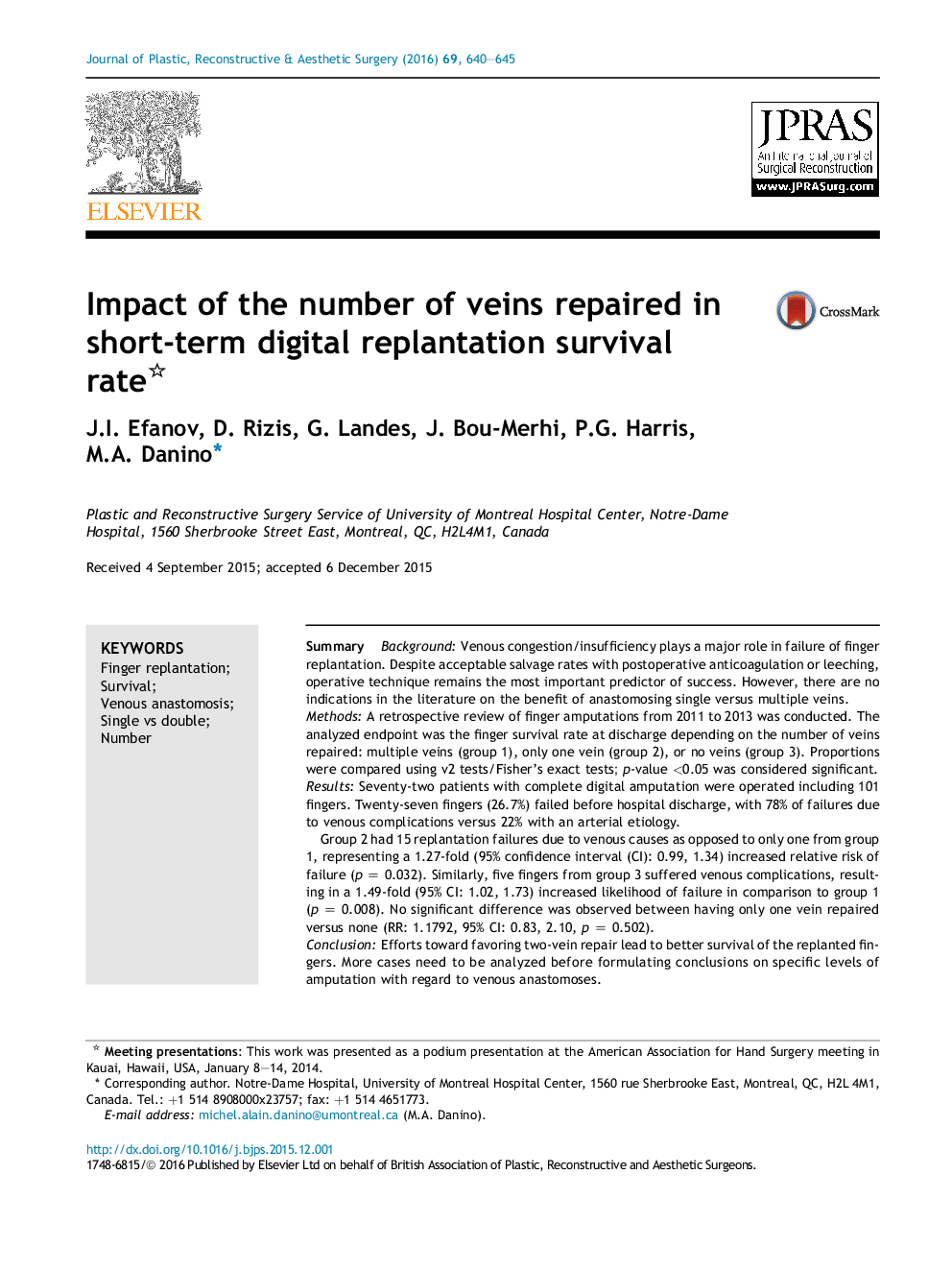| Article ID | Journal | Published Year | Pages | File Type |
|---|---|---|---|---|
| 4117088 | Journal of Plastic, Reconstructive & Aesthetic Surgery | 2016 | 6 Pages |
SummaryBackgroundVenous congestion/insufficiency plays a major role in failure of finger replantation. Despite acceptable salvage rates with postoperative anticoagulation or leeching, operative technique remains the most important predictor of success. However, there are no indications in the literature on the benefit of anastomosing single versus multiple veins.MethodsA retrospective review of finger amputations from 2011 to 2013 was conducted. The analyzed endpoint was the finger survival rate at discharge depending on the number of veins repaired: multiple veins (group 1), only one vein (group 2), or no veins (group 3). Proportions were compared using v2 tests/Fisher's exact tests; p-value <0.05 was considered significant.ResultsSeventy-two patients with complete digital amputation were operated including 101 fingers. Twenty-seven fingers (26.7%) failed before hospital discharge, with 78% of failures due to venous complications versus 22% with an arterial etiology.Group 2 had 15 replantation failures due to venous causes as opposed to only one from group 1, representing a 1.27-fold (95% confidence interval (CI): 0.99, 1.34) increased relative risk of failure (p = 0.032). Similarly, five fingers from group 3 suffered venous complications, resulting in a 1.49-fold (95% CI: 1.02, 1.73) increased likelihood of failure in comparison to group 1 (p = 0.008). No significant difference was observed between having only one vein repaired versus none (RR: 1.1792, 95% CI: 0.83, 2.10, p = 0.502).ConclusionEfforts toward favoring two-vein repair lead to better survival of the replanted fingers. More cases need to be analyzed before formulating conclusions on specific levels of amputation with regard to venous anastomoses.
